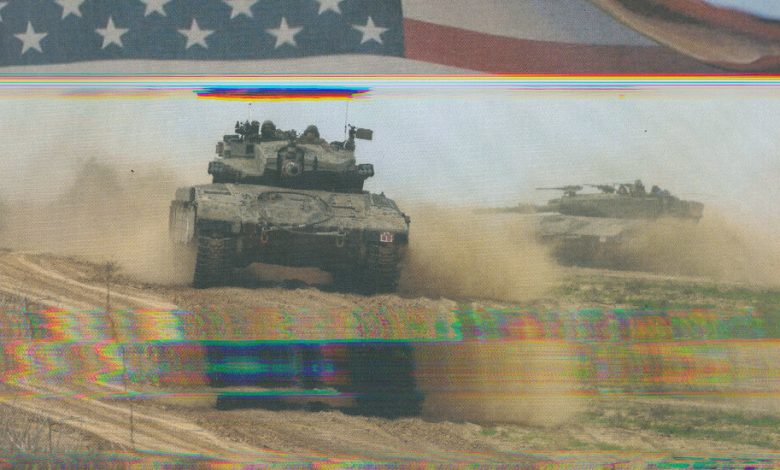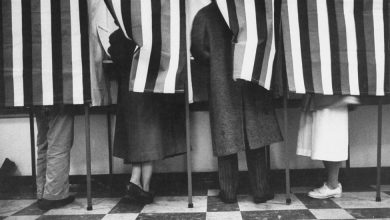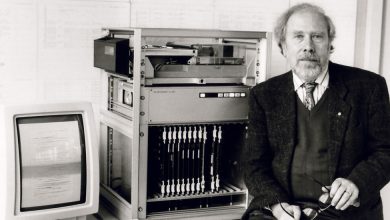Gaza, Ukraine and the Lingering Scars From the War on Terror

It will be a long time before any of us understand what happened after Oct. 7, but it seems important first to recognize how news of everything comes to us today. Newspaper headlines aren’t fixed — they change over the course of a day; social media presents tragedies in fragmented shards, which are then contested and rejected and reaffirmed; television news, especially on foreign affairs, remains too hyper and flashy to take seriously. Every single one of us had our own individualized experience of that day and the days after it. No one can confidently say who knew what when.
As I remember it, first there was news that Hamas attacked Israel, that it had somehow broken out of Gaza and through Israel’s supposedly impenetrable wall. Then came evidence of deaths, a number that ticked up over the day, because the improbable invasion was improbably continuing, lasting for hours. What was happening? Who could know?
At some point that day, I felt a reflexive fear: that if Hamas, an Islamic militant group, had attacked Israel, an American-backed nuclear power, and killed large numbers of people, the military response would be something extraordinary, in a form we could not yet conceive. That fear was as thunderous as my horror at the attack itself, an emotional eclipse. I wasn’t the only one who felt it.
Some viewed this response as a sort of erasure. “Why this desperate attempt to ‘disappear’ Oct. 7, as if it is already ancient — or irrelevant — history?” the social theorist Susie Linfield wrote weeks later, after it was known that on Oct. 7 Hamas brutally killed around 1,200 Israelis, injured over 3,300 and kidnapped 240. Their targets included soldiers, women, children and the elderly. It was the deadliest day in Israel’s history, an unending nightmare for its people.
We can speculate whether our emotional fast-forwarding on Oct. 7 had been particular to our knowledge of Israeli-Palestinian history, or to our political sympathies, or even to basic geopolitical logic. But what happened — at least in my mind — felt more primitive and involuntary, what I could only describe later as a reflexive focus not on what was happening in the near present but on what might happen in the near future.
That might have been why, when President Biden and Israeli officials said that Oct. 7 was Israel’s Sept. 11, intending the comparison as a rallying cry for self-defense, their words seemed to many instead a cruel provocation of trauma. Were they kidding? The response to Sept. 11 was catastrophic for the Arab and Muslim world and, eventually, terrible for the United States. A similar response to Oct. 7 would be terrible for the Israeli people, and a total reinvention of hell for the Palestinians. We know this because we are Americans. In the Israelis, we saw our own leaders: shocked victims for a day, destroyers of worlds every day thereafter.
But by then, the bombing of Gaza had already begun.
This year, the United States found itself engaged in two major global conflicts, in Ukraine and Israel. Both Mr. Biden and the president of the European Commission, Ursula von der Leyen, have linked the two wars together in an effort to shore up a common foreign policy against those who seek to “annihilate a neighboring democracy.” Americans’ attitudes toward both conflicts vary, however, particularly among a youth population that is furious about Gaza and ambivalent about Ukraine. A recent New York Times/Siena College poll found that a stunning 72 percent of voters ages 18 to 29 disapprove of Mr. Biden’s handling of the Gaza crisis.
The young always rebel against the old. But this generation might be unique for one reason. Their whole experience of American foreign policy — as well as American values, reflexes and rhetoric — has been defined by one overarching foreign policy era: the war on terror.
In the 20th century, the Cold War era inculcated a Cold War worldview. Many Americans came to see foreign conflicts through the prism of good and evil. They viewed their country’s foreign affairs “mistakes” as a divergence from, as the British writer Anatol Lieven called it, a “state of noble innocence.” The older generation spent most of their lives awash in such myths. Those of us in the middle absorbed them for half of our lives, until Sept. 11, 2001, ushered us into a whole new state of being.
Those on college campuses right now grew up with no memory of the patriotic Cold War or the end-of-history triumph after the collapse of the Soviet Union. Most were born after Sept. 11 itself. That means they don’t have a wellspring of noble innocence, no sense of endings, not even a memory of victimhood. They grew up with only increasingly scary and cascading crises set off by their own government’s actions: Sept. 11 became the invasions of Afghanistan and Iraq, which became the emergence of ISIS, which became a refugee crisis, which became right-wing nationalism. It all happened faster than the average mind could comprehend.
What, then, did this relentless war on terror era do to the American psyche and American attitudes to our foreign policy? Some believed the remote nature of the campaign — the drone strikes and secret terrorism operations and land wars fought by only 1 percent of the population — might engender a new kind of American detachment from the world. The novelist and Iraq war veteran Phil Klay called the terror wars “invisible,” and for a long time this seemed true. I was living in Istanbul in the early 2010s, the years of Recep Tayyip Erdogan’s authoritarian turn, when ISIS was establishing its caliphate and Syrian refugees were dying at sea on their way to Europe. I would return home sometimes to New York, surprised that life seemed to continue there as normal. It did not feel normal in Turkey, where the reversal of democratic progress had begun, or in the greater Middle East, where the realities of a disintegrating region — the dissolution of nations and borders and seemingly civilization itself — were transforming how people felt about their individual lives and their futures.
Then 2016 hit, and with it, Brexit and the election of Donald Trump. The West, too, or at least a younger and left-leaning slice of it, seemed to plunge into the psychological state I felt in Turkey, the feeling that society was going backward and progress was ending. We were seeing one violent era’s crimes manifesting in another; we were living in the age of consequences, and the errors of history no longer seemed like things we could fix or control.
Perhaps this is why we saw the rise of history projects like “Slow Burn: The Road to the Iraq War,” “Fiasco: Benghazi” and “The 1619 Project.” Audiences wanted to know the cause and effect, whatever it was that had made our world this way. The United States’s ignominious withdrawal from Afghanistan, just before the 20th anniversary of Sept. 11, was a high-pitched occasion for connecting the dots between the recent past and the present. Article after article considered how damaging the U.S. reaction to Sept. 11 had been: counterterrorism operations in over 80 countries, official wars in seven, almost one million dead, 38 million people displaced, entire countries destroyed, incomprehensible damage to the Arab and Muslim world. And consequences at home: “Frontline,” for example, released a two-hour documentary linking Sept. 11, 2001, to Jan. 6, 2021.
After the withdrawal from Afghanistan, it felt as if Americans might reconsider their country’s role in foreign affairs. But six months later, Russia invaded Ukraine. “Pressure is growing again, especially given the failures in Afghanistan,” as the legal scholar Aziz Rana had written just a few months earlier, “to find new ways to display American power, to prove that, as Biden has said, ‘America is back.’” Ukraine was a different enough war to resist comparisons to the war on terror. It was a clean break: a war that once again pitted democrats against authoritarians and restored Americans to the side of the good against evil.
But young people, according to polls, felt uncertain about American involvement in Ukraine. The binary of democracy versus authoritarianism didn’t ring true for a generation that had begun questioning the meaning of democracy at home and abroad. They lived with a sense of doom around climate change and many had embraced Black Lives Matter protests, both of which taught them about American hypocrisy and the preciousness of human life. “We have trouble with the idea that our nation has a right to lecture any other,” the young editors of the magazine The Drift wrote in June 2022. (I have taught international affairs to 20-year-olds for the last three years, so I have had exposure to these sentiments.) Many Americans had been left with a void in their emotional landscape, an unanswered question about the American project: If the war on terror was something imagined by a democracy, then what was a democracy? What is a democracy that kills so many people?
As of this writing, the Israeli military has killed around 20,000 Palestinians and wounded 52,000, according to Gazan health authorities.That death toll includes an estimated 7,000 children. It has killed more than 60 journalists, over 130 U.N. aid workers, poets and cooks and teachers and I.T. specialists and mothers. The bombing is worse — faster, heavier, more indiscriminate — than what the Americans did in Iraq, Syria or Afghanistan. But it is also reminiscent of all the wars there.
One major difference between the killing in 2023 and the killing during the war on terror is that now we are seeing the devastation in real time. America censored much of the wars in Iraq and Afghanistan, but we are experiencing the Gaza war in videos and photos and data charts every day, particularly on social media platforms like TikTok and Instagram and X, depending, again, on one’s generation. In November I opened X and saw a video credited to the photojournalist Motaz Azaiza in which Palestinians discover — and the video’s perspective made it feel as if I was discovering it, too — a slab of concrete, maybe a wall, maybe a roof, something enormous and heavy, and beneath it what appears to be the legs of four children, their upper bodies crushed and hidden by the concrete that a bomb had brought down on them. They were all there together like that likely because they had been in bed, asleep.
Americans can see such images every day, all day, almost in real time. The invisible war has been made ruthlessly visible, even experiential; we see Palestinians post on social media against the war one day and learn of their deaths the next. Many see what is happening to Palestinians and recognize what has happened to Arabs and Muslims for decades, as if recovering repressed memories. The rise of so-called smart bombs and drones — as well as an undercurrent of persistent American innocence — once compelled us to believe that the United States and its allies at least attempted to preserve civilian life. But right now “civilian casualties,” a phrase that implies regret, has lost any meaning entirely.
Rarely has the rhetorical chasm between us and our leaders felt so surreal.Hearing their bland strategy-speak and clinical language — especially after witnessing violence on social media all day — activates feelings of despair, distrust and even bewilderment. “Government spokespeople are calculating and insincere,” the American Palestinian Lebanese academic Saree Makdisi wrote in n+1. “The ultimate nihilists, they don’t actually believe in anything, least of all anything they say themselves.” Fintan O’Toole once wrote that, during the war in Afghanistan, “linguistic obfuscation attained the zenith of sinister absurdity.” The phrase “humanitarian pause,” which seems to suggest that killing is the norm and living is the exception, proves that even sinister war on terror rhetoric can be outdone.
Phil Klay was right: The remote nature of the invisible war did produce a bizarre detachment from reality, but primarily in our leaders. The past few months in the United States indicate that many Americans have been left in another psychological state — something more like survival mode, anticipating what calamity might come next. Their greatest, even most paranoid fears about the actions of their own government and its allies are seemingly confirmed by what they see on their screens. After all, those of us who panicked on Oct. 7 or 8 about Israeli reprisal were right: It was both what we expected and beyond anything we imagined.
This may mean the United States is producing a more passionate, engaged and informed populace. The danger, however, is that many of us will get stuck in a state of righteous preparation for a grim future, unable to grieve, process and plan for the precious present. The danger is that in the absence of any honest communication or shared reality between a government and its people, the word “democracy” loses meaning, too.
In 2022, the Iranian American academic Laleh Khalili observed that in the 21st century, every American war disappeared from public view “without even a minimal reckoning like the Church Committee after the Vietnam War.” That committee investigated the activities of U.S. intelligence agencies, including political assassinations, the targeting of antiwar activists and the use of journalists to disseminate propaganda. In our current times, instead, Ms. Khalili observed, “the very people responsible for the wreckage of countries and the killing of millions swan on to the next lucrative assignment.”
Two years earlier, in 2020, Matthew Duss, who was then Bernie Sanders’s foreign policy adviser, proposed just such a reckoning. Mr. Duss called for “a comprehensive review, along the lines of the 9/11 Commission or the 2006 Iraq Study Group, to explore the consequences of U.S. antiterrorism policy since 9/11: surveillance, detention, torture, extrajudicial killing, the use of manned and unmanned airstrikes, and partnerships with repressive regimes.” In other words, Mr. Duss thought Americans should question under what terms their country uses violence. The Church Committee led to a ban on political assassinations and increased oversight of U.S. intelligence organs; it’s tempting to wonder whether a 21st-century committee might achieve similarly tangible results.
Israeli officials have declared that their campaign against Hamas will stretch on for months, or even for a year, a prospect so dangerous and unbearable it is beyond comprehension. Americans, especially the young, need an accounting, not of self-defense or values or strategy but of what they are seeing: all this killing. In retrospect, the Duss proposal feels like a way to stop time, to reconsider the direction of what the historian Greg Grandin has called the “perpetual motion machine” of U.S. government. Without such an effort, Americans, especially young Americans who have only known this violent century, will continue to struggle without even a base-line faith in their country’s ideals. All other notions of foreign policy cannot exist without resolving this question of the American relationship to death.
In October, the Americans and Israelis said that Oct. 7 was Israel’s Sept. 11. Americans know that on Sept. 11, Al Qaeda killed nearly 3,000 people, and in the 20 years that followed, the U.S. war on terror killed almost one million. Many Americans, marooned in the condition of future thinking, fear what could come next in the Middle East. They fear that one day Israel, aided by the United States, will destroy Gaza entirely. They fear that the devastation will set off another horrifying cascade of crises, an unfathomable loss of life. And they know that someday Americans will question what madness overcame them in 2023, why they once again allowed the killing of so many people, and what happened to them long ago that made them this way.
Suzy Hansen is a journalist who lived in Istanbul for more than 10 years and the author of “Notes on a Foreign Country: An American Abroad in a Post-American World,” which was a finalist for a 2018 Pulitzer Prize.
The Times is committed to publishing a diversity of letters to the editor. We’d like to hear what you think about this or any of our articles. Here are some tips. And here’s our email: [email protected].
Follow the New York Times Opinion section on Facebook, Instagram, TikTok, X and Threads.




